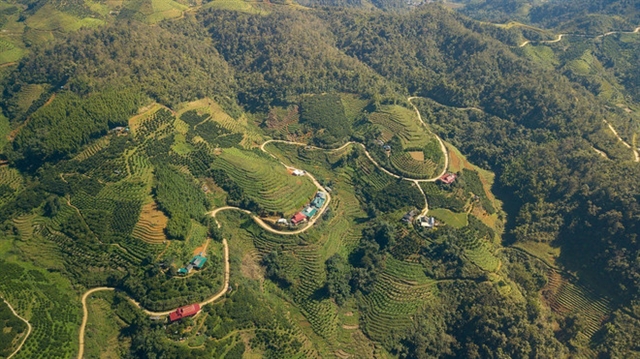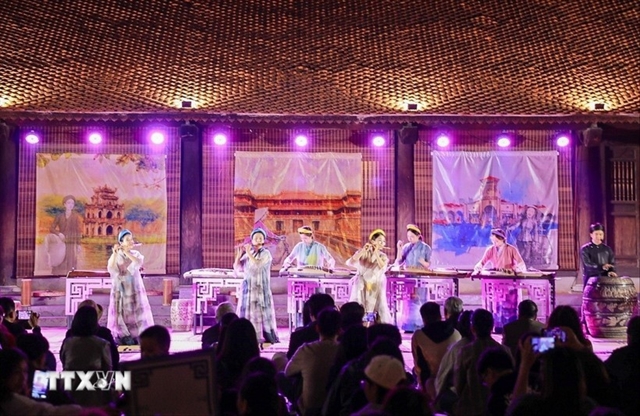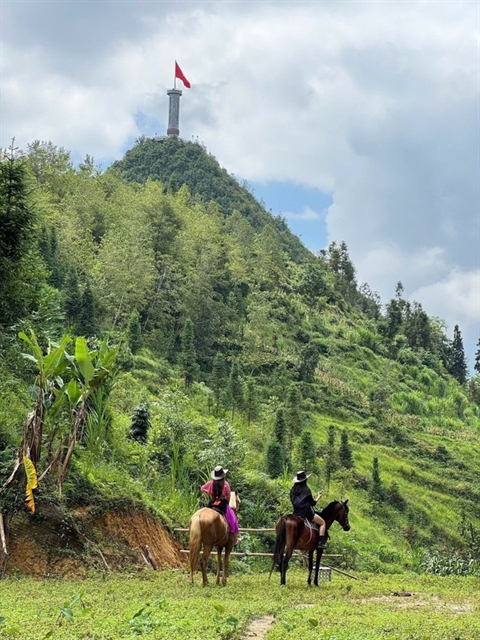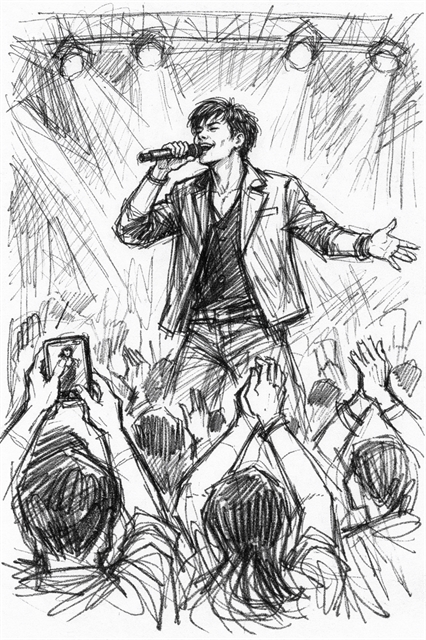 Talk Around Town
Talk Around Town
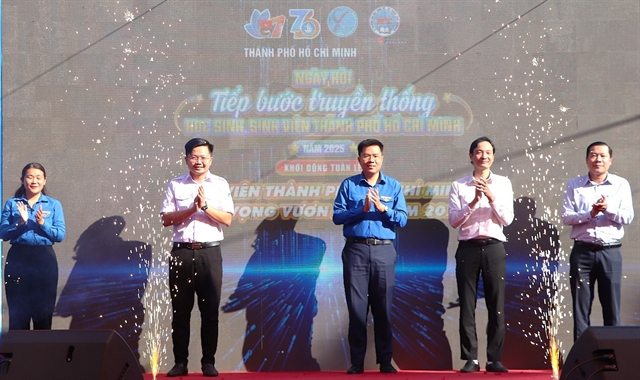
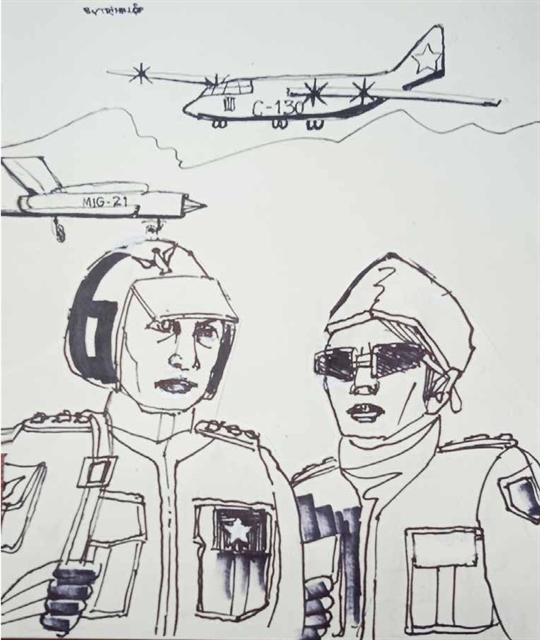 |
| Illustration by Trịnh Lập |
By Nguyễn Mỹ Hà
It has been 50 years, and the story about the final moments of the war on April 30, 1975, has been told only within our extended family. Like many others in Việt Nam, ours had members scattered across the country — North, South, and Central — who at times found themselves on opposing sides.
This particular story was told by our second cousin, a military engineer tasked with defending a bridge that led to Sài Gòn [now Hồ Chí Minh City]. His job was to stop the Liberation forces from advancing. His team did their best to hold the position, but as an engineer, he also tried to avoid destroying the bridge for as long as possible.
On the other side, an advancing Liberation army unit was trying to take control of that same bridge. They could have called in artillery support to clear the Sài Gòn army's resisting post, but they didn’t.
The standoff continued until those on the southern end of the bridge heard the then-President Dương Văn Minh of the Republic of Việt Nam's call on his troops to "lay down their weapons to avoid further unnecessary losses". They surrendered.
Our cousin later went to a re-education camp and endured the hardships there. It was there that he met the officer from the other side — now part of the winning side. To his surprise, the man was also a military engineer. He told our cousin he had deliberately avoided destroying the bridge, hoping it would remain intact and serve local people after the war.
The officer, impressed by the southern engineer’s restraint, sought him out after the war. They never became close, but both knew they had tried to preserve something valuable for the country in the final moments of conflict.
It may sound like a scene from a war movie, but it was a true story, told by a southerner with no need to make himself look better.
Their lives went in different directions. They were never friends or enemies again, but the bridge they both risked their lives to protect stayed intact and later served the local community.
A shared mission after the war
After reunification, many southern soldiers reported for duty and later joined the newly unified army. They went on to fight the Khmer Rouge in Cambodia and helped end the genocide there.
More than 1,000 aircraft, including C-130 Hercules planes, and military materials remained intact across more than 200 southern airstrips and airports. Northern pilots were surprised by the modernity of facilities such as Tân Sơn Nhất Airport, which had double runways and well-equipped hangars.
In May 1975, the Sài Gòn Military Administration Committee broadcast a call for pilots and technicians to return to work. Over a thousand engineers responded and were employed.
Retired Colonel Nguyễn Thanh Lâm, then a young second lieutenant of the Việt Nam People's Air Force, recalled hearing about a capable engineer of the defunct Sài Gòn air force named Quân in a re-education camp. With his supervisor’s approval, he drove to Xuân Lộc, Đồng Nai, and personally invited Quân back. Quân helped restore the C-130 aircraft for immediate use and helped identify more southern engineers for the team.
Hundreds of pilots and technicians also returned to Cần Thơ Airport. Many had years of experience and a genuine love for aviation. At the same time, tensions on the southwestern border with Cambodia were growing. Reports of Khmer Rouge attacks prompted many former southern military personnel to ask to serve in the new army.
Northern air force Colonel Nguyễn Văn Kháng, who took over Biên Hoà Airport, remembered that Nguyễn Thành Trung, a mutinous pilot from the Sài Gòn air force, spoke English — and he began teaching northern staff at night.
On May 27, 1975, the first successful flight by new Liberation pilots took place. Thirty-six northern pilots changed to fly new US aircraft within a month, impressing their trainers.
Some former southern pilots openly admitted they had flown bombing missions over areas under the control of the liberation force. Now, they wanted to help protect Vietnamese population along the border from the Khmer Rouge.
Though still officially temporary staff, they worked, ate, and were treated as equals alongside their northern counterparts. Over time, they realised these former enemies were simply co-workers, sharing food, hardship, and the weight of national duty.
Prepared for new battles
The salaries were low, food was limited, and life was tough. Northern soldiers, many without families in the south, often gave their canned food to those supporting dependents. They shared cigarettes, water, and straw mats for midday naps — as if they had never stood on opposite sides of the battlefield.
With the threat of another war on the horizon, they stood together.
Colonel Lê Hải of the new air force battalion said they were only able to carry out their missions thanks to support from southern technical staff. Now retired, he hopes to meet them again and remember those days.
Colonel Nguyễn Văn Bảy, commander of Air Regiment 937, recalled that they took over 200 aircraft, 500 vehicles, and intact depots and runways. But there were only six pilots in the Quyết Thắng Brigade — each now responsible for 33 aircraft. Former southern air force staff were brought in to help train new northern pilots. After just 10 days of joint training, the new teams were operational on American A-37 aircraft.
By June 1975, the regiment could operate 40–50 flights daily. For five years, no serious accidents occurred thanks to careful training and collaboration between northern and southern staff.
By late 1977, as tensions with the Khmer Rouge escalated, “No one shall touch Việt Nam” became the shared motto. On the eve of National Day September 2, 1977, Khmer Rouge forces attacked An Giang Province. An airlift was organised to dispatch 70,000 soldiers and equipment to the border.
By the end of 1977 and into 1978, more wounded soldiers needed urgent care. In January 1978, the first flight of 39 injured troops was successfully evacuated to Hà Nội. By the end of the year, more than 8,000 had been flown north for treatment.
At the upcoming military parade in Hồ Chí Minh City on April 30, we hope to see some of these men — united in hardship and national mission — representing the resilience and brotherhood forged during one of the hardest times in our history. VNS

